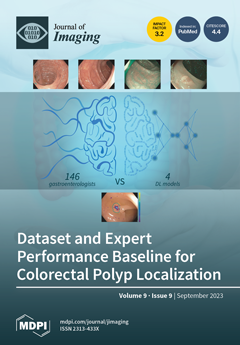To safely select the proper therapy for ventricular fibrillation (
), it is essential to distinguish it correctly from ventricular tachycardia (
) and other rhythms. Provided that the required therapy is not the same, an erroneous detection might
[...] Read more.
To safely select the proper therapy for ventricular fibrillation (
), it is essential to distinguish it correctly from ventricular tachycardia (
) and other rhythms. Provided that the required therapy is not the same, an erroneous detection might lead to serious injuries to the patient or even cause ventricular fibrillation (
). The primary innovation of this study lies in employing a CNN to create new features. These features exhibit the capacity and precision to detect and classify cardiac arrhythmias, including
and
. The electrocardiographic (ECG) signals utilized for this assessment were sourced from the established MIT-BIH and AHA databases. The input data to be classified are time–frequency (tf) representation images, specifically, Pseudo Wigner–Ville (
). Previous to Pseudo Wigner–Ville (
) calculation, preprocessing for denoising, signal alignment, and segmentation is necessary. In order to check the validity of the method independently of the classifier, four different CNNs are used: InceptionV3, MobilNet, VGGNet and AlexNet. The classification results reveal the following values: for VF detection, there is a sensitivity (Sens) of 98.16%, a specificity (Spe) of 99.07%, and an accuracy (Acc) of 98.91%; for ventricular tachycardia (
), the sensitivity is 90.45%, the specificity is 99.73%, and the accuracy is 99.09%; for normal sinus rhythms, sensitivity stands at 99.34%, specificity is 98.35%, and accuracy is 98.89%; finally, for other rhythms, the sensitivity is 96.98%, the specificity is 99.68%, and the accuracy is 99.11%. Furthermore, distinguishing between shockable (
/
) and non-shockable rhythms yielded a sensitivity of 99.23%, a specificity of 99.74%, and an accuracy of 99.61%. The results show that using tf representations as a form of image, combined in this case with a CNN classifier, raises the classification performance above the results in previous works. Considering that these results were achieved without the preselection of ECG episodes, it can be concluded that these features may be successfully introduced in Automated External Defibrillation (AED) and Implantable Cardioverter Defibrillation (ICD) therapies, also opening the door to their use in other ECG rhythm detection applications.
Full article






